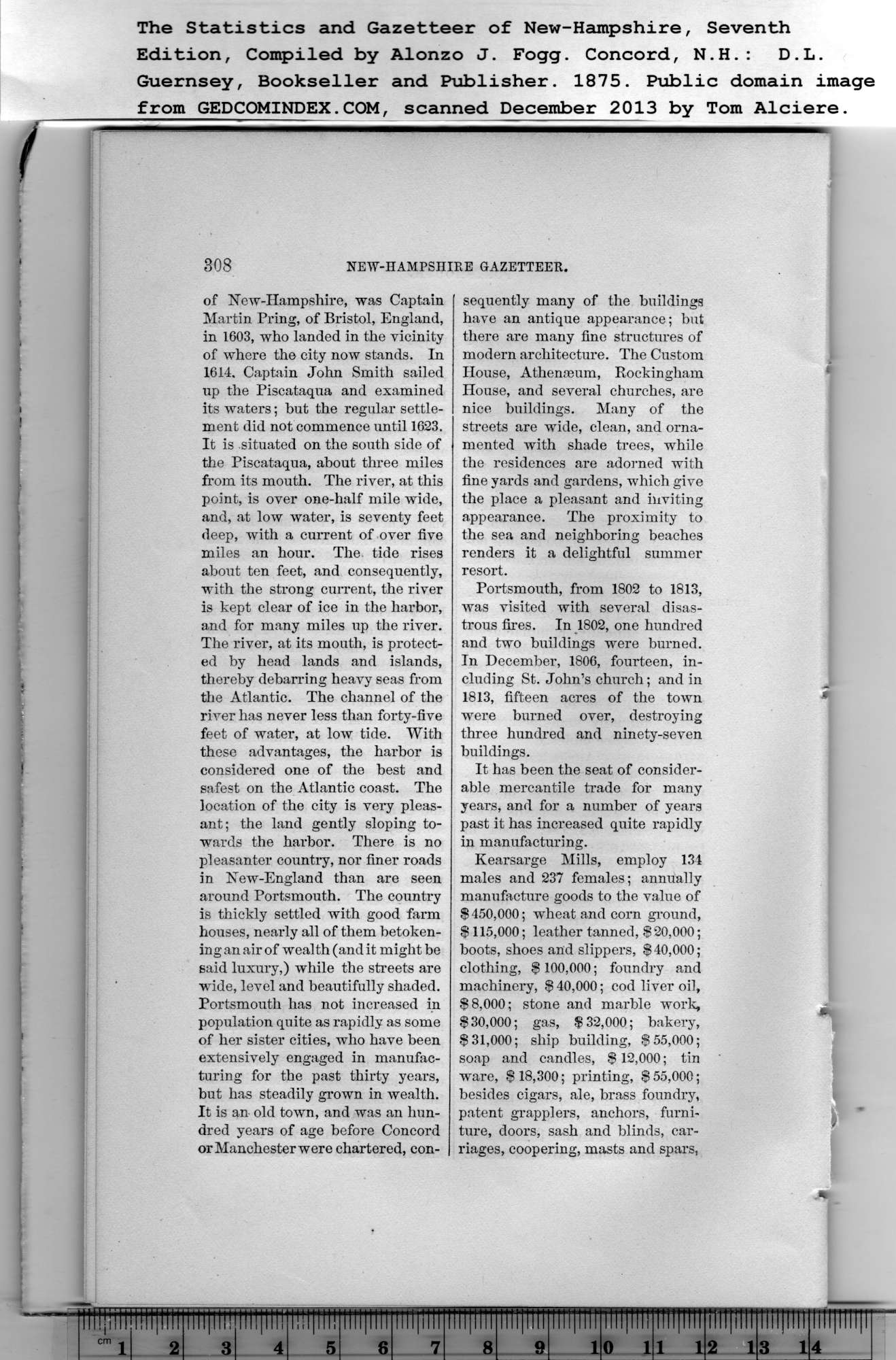|
of New-Hampshire, was Captain
Martin Pring, of Bristol, England,
in 1603, who landed in the vicinity
of where the city now stands. In
1614, Captain John Smith sailed
up the Piscataqua and examined
its waters; but the regular settle-
ment did not commence until 1623.
It is situated on the south side of
the Piscataqua, about three miles
from its mouth. The river, at this
point, is over one-half mile wide,
and, at low water, is seventy feet
deep, with a current of over five
miles an hour. The tide rises
about ten feet, and consequently,
with the strong current, the river
is kept clear of ice in the harbor,
and for many miles up the river.
The river, at its mouth, is protect-
ed by head lands and islands,
thereby debarring heavy seas from
the Atlantic. The channel of the
river has never less than forty-five
feet of water, at low tide. With
these advantages, the harbor is
considered one of the best and
safest on the Atlantic coast. The
location of the city is very pleas-
ant; the land gently sloping to-
wards the harbor. There is no
pleasanter country, nor finer roads
in New-England than are seen
around Portsmouth. The country
is thickly settled with good farm
houses, nearly all of them betoken-
ing an air of wealth (and it might be
said luxury,) while the streets are
wide, level and beautifully shaded.
Portsmouth has not increased in
population quite as rapidly as some
of her sister cities, who have been
extensively engaged in manufac-
turing for the past thirty years,
but has steadily grown in wealth.
It is an old town, and was an hun-
dred years of age before Concord
or Manchester were chartered, con-
sequently many of the buildings
have an antique appearance; hut
there are many fine structures of
modern architecture. The Custom
House, Athenmum, Rockingham
House, and several churches, are
nice buildings. Many of the
streets are wide, clean, and orna-
mented with shade trees, while
the residences are adorned with
fine yards and gardens, which give
the place a pleasant and inviting
appearance. The proximity to
the sea and neighboring beaches
renders it a delightful summer
resort. |
Portsmouth, from 1802 to 1813,
was visited with several disas-
trous fires. In 1802, one hundred
and two buildings were burned.
In December, 1806, fourteen, in-
cluding St. John’s church; and in
1813, fifteen acres of the town
were burned over, destroying
three hundred and ninety-seven
buildings.
It has been the seat of consider-
able mercantile trade for many
years, and for a number of years
past it has increased quite rapidly
in manufacturing.
Kearsarge Mills, employ 134
males and 237 females; annually
manufacture goods to the value of
$450,000; wheat and corn ground,
$ 115,000; leather tanned, $ 20,000;
hoots, shoes and slippers, $40,000;
clothing, $ 100,000; foundry and
machinery, $ 40,000; cod liver oil,
$8,000; stone and marble work,
$30,000; gas, $32,000; bakery,
$31,000; ship building, $55,000;
soap and candles, $ 12,000; tin
ware, $18,300; printing, $55,000;
besides cigars, ale, brass foundry,
patent grapplers, anchors, furni-
ture, doors, sash and blinds, car-
riages, coopering, masts and spars, |
